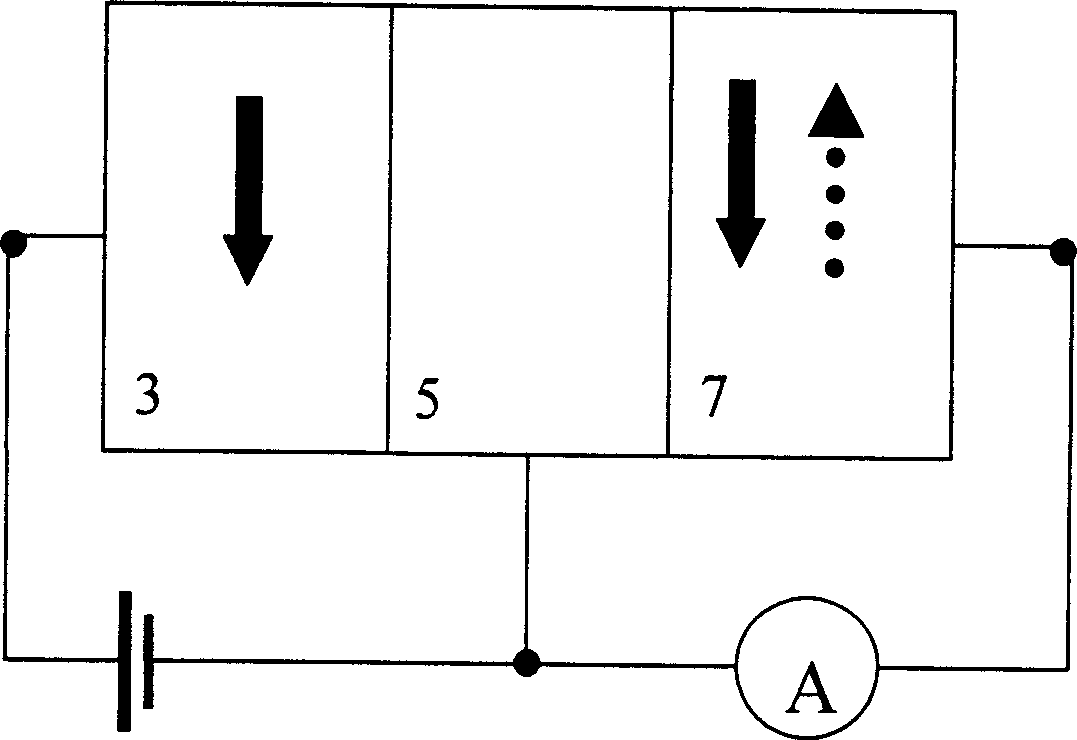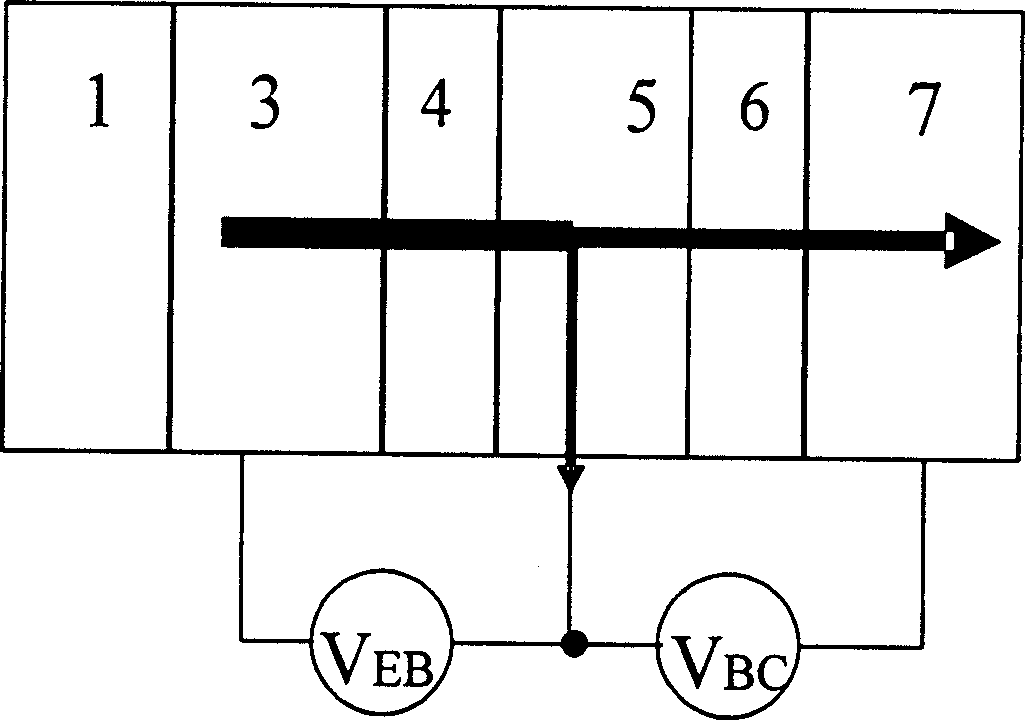Transistor based on bibarrier tunnel junction resonance tunneling effect
A resonant tunneling and tunnel junction technology, applied in transistors, diodes, semiconductor devices, etc., can solve problems such as large leakage current, lack of control, and difficulty in fabricating double-barrier tunnel junctions
- Summary
- Abstract
- Description
- Claims
- Application Information
AI Technical Summary
Problems solved by technology
Method used
Image
Examples
Embodiment 1
[0053] refer to Figure 3a and prepare a spin transistor with double potential barrier tunnel junction resonant tunneling effect of the present invention. The spin transistor with double potential barrier tunnel junction resonant tunneling effect is made of a Si material with a thickness of 0.4 mm as the substrate 1, and a layer of SiO is formed on the Si substrate 1. 2 An insulating layer 2 with a thickness of 10 nm is formed, and an emitter 3 is formed on the insulating layer 2. The emitter 3 is composed of an antiferromagnetic layer Ir-Mn with a thickness of 12 nm and Fe of 8 nm. The antiferromagnetic layer Ir-Mn is used for In the direction of the magnetization of the fixed emitter 3; using Al 2 o 3 The first tunnel barrier layer 4 made of materials is formed on the emitter 3; the thickness of the first tunnel barrier layer 4 is 1 nm. And a base 5 with a thickness of 8 nm is formed on the first tunnel barrier layer 4, and the base 5 is made of non-magnetic metal Cu. an...
Embodiment 2
[0056] refer to Figure 3a and prepare a spin transistor with double potential barrier tunnel junction resonant tunneling effect of the present invention. The spin transistor with double potential barrier tunnel junction resonant tunneling effect is made of a Si material with a thickness of 0.6 mm as the substrate 1, and a layer of SiO is formed on the Si substrate 1. 2 An insulating layer 2 with a thickness of 100 nm is formed, and an emitter 3 is formed on the insulating layer 2. The emitter 3 is composed of an antiferromagnetic layer Fe-Mn with a thickness of 15 nm and a La with a thickness of 4 nm. 0.7 Sr 0.3 MnO 3 The direction of the magnetization of the emitter 3 is fixed; SrTiO 3 The first tunnel barrier layer 4 made of material is formed on the emitter 3, and the thickness of the first tunnel barrier layer 4 is 1.0 nm; and a base electrode with a thickness of 4 nm is formed on the first tunnel barrier layer 4 5. The base 5 is composed of a non-magnetic metal mater...
Embodiment 3
[0060] refer to Figure 3a and prepare a spin transistor with double potential barrier tunnel junction resonant tunneling effect of the present invention.
[0061] The spin transistor with double potential barrier tunnel junction resonant tunneling effect is made of a Si material with a thickness of 0.6 mm as the substrate 1, and a layer of SiO is formed on the Si substrate 1. 2 An insulating layer 2 with a thickness of 300 nm is formed, and an emitter 3 is formed on the insulating layer 2, and the emitter 3 is composed of a GaMnAs magnetic semiconductor material layer with a thickness of 4 nm. The direction of the magnetization of the emitter 3 is relatively free and can change with the external magnetic field; the first tunnel barrier layer 4 made of MgO material is formed on the emitter 3; the first tunnel barrier layer 4 The thickness is 1.0 nm. And on the first tunnel barrier layer 4, a base electrode 5 with a thickness of 5nm is formed, and the base electrode 5 is made...
PUM
 Login to View More
Login to View More Abstract
Description
Claims
Application Information
 Login to View More
Login to View More - R&D
- Intellectual Property
- Life Sciences
- Materials
- Tech Scout
- Unparalleled Data Quality
- Higher Quality Content
- 60% Fewer Hallucinations
Browse by: Latest US Patents, China's latest patents, Technical Efficacy Thesaurus, Application Domain, Technology Topic, Popular Technical Reports.
© 2025 PatSnap. All rights reserved.Legal|Privacy policy|Modern Slavery Act Transparency Statement|Sitemap|About US| Contact US: help@patsnap.com



